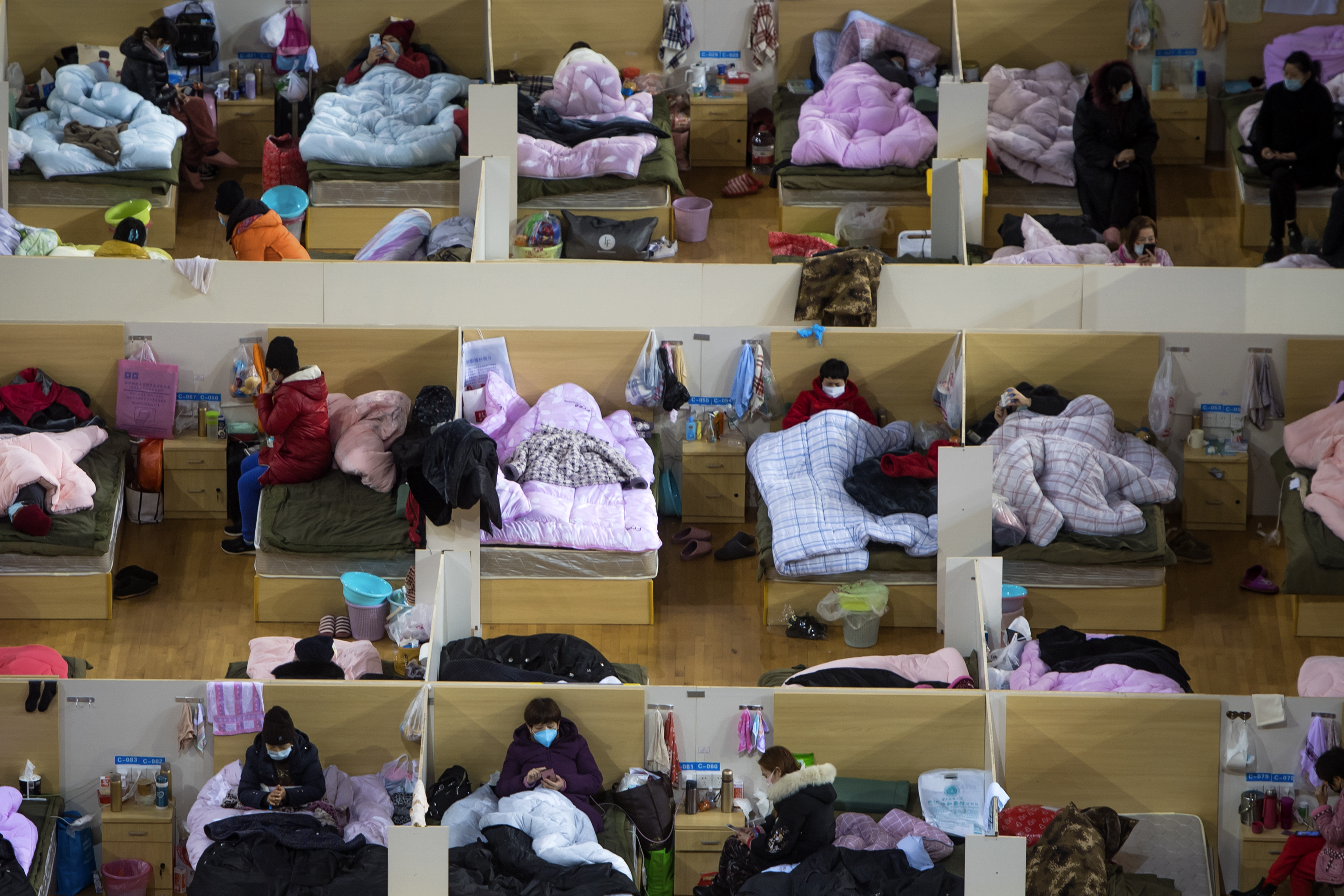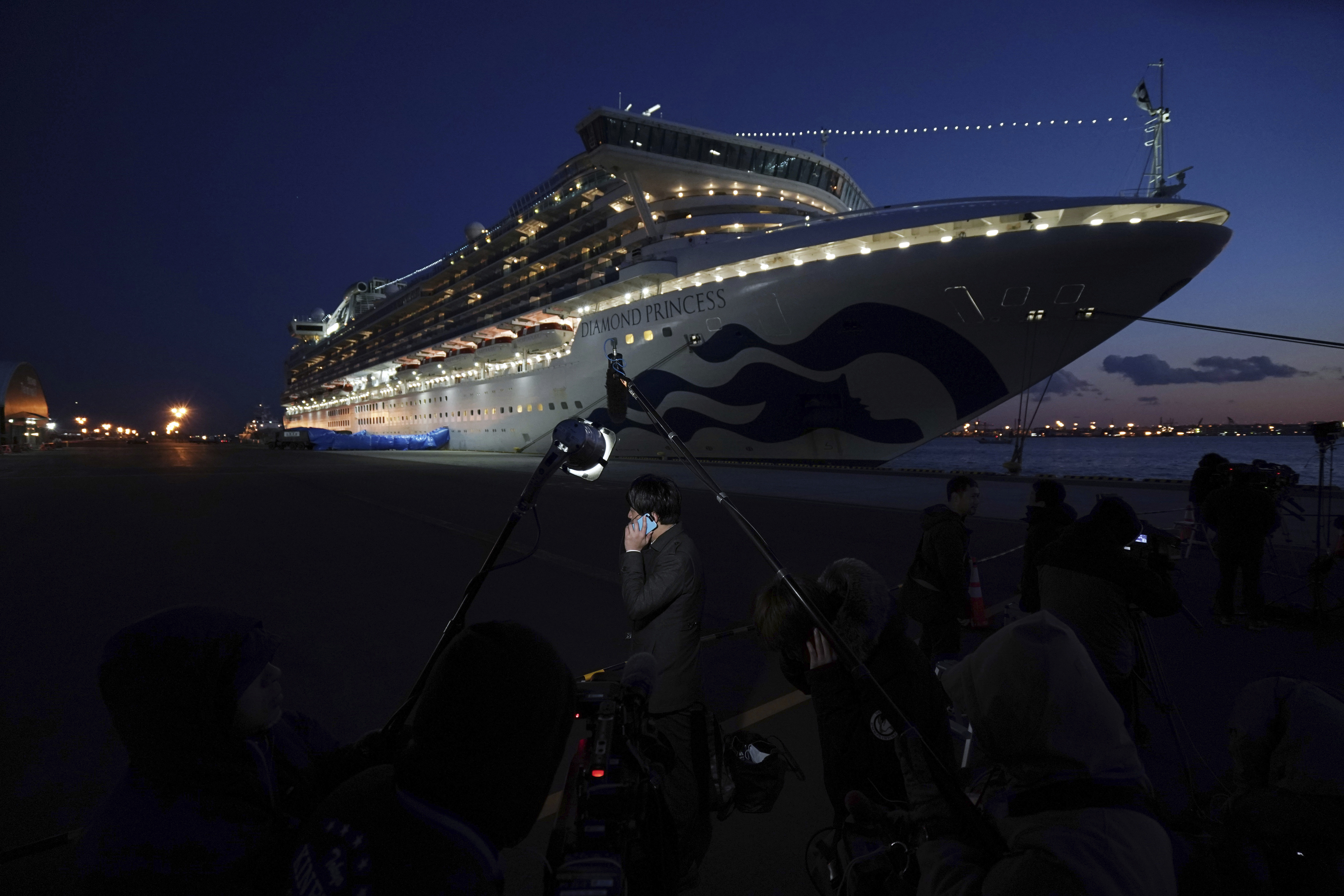About 500 passengers left the cruise ship Diamond Princess on Wednesday at the end of a much-criticized two-week quarantine aboard the vessel, docked in Japan, that failed to stop the spread of the new virus among passengers and crew.
The quarantine's flop was underlined as authorities announced 79 more cases, bringing the total on the ship to 621. Results were still pending for some other passengers and crew among the original 3,711 people on board.
WATCH ANYTIME FOR FREE
Stream NBC10 Boston news for free, 24/7, wherever you are. |
Japan's government has been questioned over its decision to keep people on the ship, which some experts have called a perfect virus incubator. The Diamond Princess is the site of the most infections outside of China, where the illness named COVID-19 emerged late last year.
Confirmed Coronavirus Cases
Source: NBC News, staff reports
Get updates on what's happening in Boston to your inbox. Sign up for our News Headlines newsletter.
Many foreign governments say they won't let passengers from the ship return unless they go through another quarantine period, so it was striking to see passengers disembark, get into taxis and disappear into Yokohama, where the ship is docked.
Japanese soldiers helped escort some passengers, including an elderly man in a wheelchair who wore a mask and held a cane. Some passengers got on buses to be transported to train stations. Some people still in their cabins waved farewell from their balconies to those who had already been processed.
"I'm a bit concerned if I'm okay to get off the ship, but it was getting very difficult physically," a 77-year-old man from Saitama, near Tokyo, who got off with his wife, told Kyodo News. "For now, we just want to celebrate."
Health Minister Katsunobu Kato said initially on Wednesday that those disembarking with negative virus tests have fulfilled the Japanese quarantine requirement and are free to walk out and go home on public transportation. He said passengers were only asked to watch their health carefully for a few days and notify local health authorities if they have any symptoms or worries.
But after meeting with experts later in the day, he urged the former passengers to refrain from non-essential outings and try to stay home for about two weeks.
"COVID-19 is not 100% known, and a lot of people got infected on the Diamond Princess. Taking those factors into consideration, we believe taking extra caution will contribute to preventing the risk of future infections," he said.
Some passengers said on Twitter they received health forms asking if they had symptoms such as a headache, fever or coughing. Passengers who tested negative and had no symptoms still had to get their body temperature checked before leaving.
Passengers were provided with a certificate stating their negative test results and completion of the quarantine.
Still, Masao Sumida, an 84-year-old passenger from Chiba, near Tokyo, told NHK television he is worried people around him may have doubts. “I know I tested negative, but I'm afraid people may try to stay away from me," he said.
Mitsuo Kaku, a professor at Tohoku University's Laboratory of Infectious Disease, said on NHK that the risk of virus transmission by those who tested negative is low, but passengers who get off the ship should “use ample precautions” to protect themselves and people around them for about two more weeks.
About 500 passengers who planned to leave on Wednesday had all left the ship by evening, and Japanese officials are to spend the next three days conducting the disembarkation of about 2,000 others. The Diamond Princess was quarantined in Yokohama near Tokyo after one passenger who left the ship earlier in Hong Kong was found to have the virus.
Even though Japanese officials insist the number of infected patients is leveling off, cases on the ship continue to mount daily. On Tuesday, 88 people tested positive; a day after 99 others were found to be infected.
Virus Outbreak Coverage
Crew members, who couldn't be confined to their rooms because they were working, are expected to stay on the ship.
The National Institute of Infectious Diseases said a report released Wednesday that the crew had not been fully isolated during the quarantine period. It said the quarantine was effective in reducing transmission among passengers, and that the increase in cases toward the end was mostly among crew or passengers in shared cabins.
“It should be noted that due to the nature of the ship, individual isolation of all those aboard was not possible,” it said.
Some medical experts who assisted with the quarantine have said anti-infection measures were often sloppy on the ship. Four health workers — a quarantine official, a physician, a paramedic who took an infected passenger to a hospital and a health ministry official assigned to quarantine paperwork on the ship — became infected.
Chief Cabinet Secretary Yoshihide Suga said a more controlled health watch for the crew members is starting now because they can be spread out and kept in isolation by using vacated passenger rooms. He acknowledged that crew members were not in adequate quarantine until now, but said they took as many preventive measures as they could.
The ship’s operator, Princess Cruises, said in a statement Tuesday that people who tested positive recently were still on the ship as they waited for transportation to hospitals.
The safety and transport logistics for moving hundreds of people will test Japanese officials.
The United States evacuated more than 300 people over the weekend who are now in quarantine in the U.S. for another 14 days. South Korea earlier Wednesday returned seven people from the cruise ship, placing the six South Koreans and one Japanese family member into quarantine.
Other foreign passengers were to be picked up by chartered flights sent from Canada, Australia, Italy and Hong Kong.
Suga has defended Japan's handling of the quarantine. “In the beginning, the United States expressed gratitude for the Japanese side. And there are many Americans who chose to stay on the ship," he said.
The U.S. government said Americans who remained on board instead of returning on chartered flights cannot return home for at least two weeks after they come ashore. Other governments picking up passengers have similar policies.
U.S. officials cited the passengers' possible exposure to the new virus while on board the Diamond Princess.
Japanese health officials say the 14-day quarantine on the ship was adequate, noting that all but one of more than 500 Japanese returnees from the epicenter of the virus in China who initially tested negative were found to be virus-free at the end of their 14-day quarantine.
The officials also defended the precautions taken on the ship. About 1,000 crew members were told to wear surgical masks, wash their hands, use disinfectant sprays and stop operations at restaurants, bars and other entertainment areas after Feb. 5, when the first group of 10 infections was reported and the start of the 14-day quarantine was announced.
Passengers were instructed to stay in their cabins and not walk around or contact other passengers. Those in windowless cabins could go out on the deck for about an hour each day.
Crew members continued to serve guests by delivering food, letters, towels and amenities, and entering passenger cabins for cleaning. Crew members also ate in groups in a crew mess hall.
Yamaguchi reported from Tokyo.



